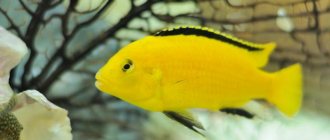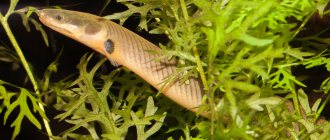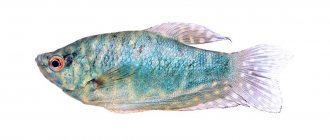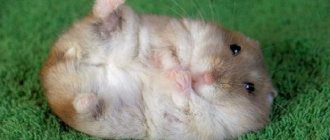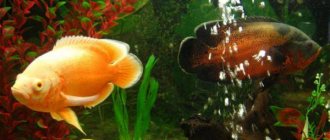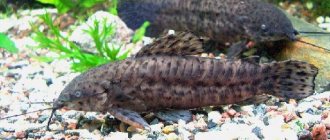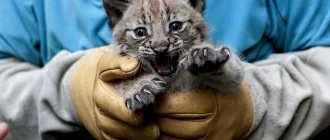The green iguana has long been one of the most popular pet lizards in the United States. In recent years, this exotic reptile has increasingly become a pet on our continent. The animal is a herbivore and leads an arboreal lifestyle. Growing to an impressive size, such a lizard requires a huge terrarium and a lot of attention.
Habitat
The species Iguana-iguana belongs to the genus True iguanas of the Iguana family. The homeland of this large lizard is Mexico, from where the species spread and is today widely represented in South and Central America; it was also brought to Florida.
The common iguana prefers to live in tropical rainforests and dense thickets on river banks. This is an arboreal species of reptile, and therefore they spend most of their life in trees.
Iguana at home: what kind of terrarium bottom will she like?
When organizing a habitat for a tropical lizard, you need to adhere to six rules.
- First rule. The bottom is covered with a mat, and paper napkins are placed on it.
- Second rule. The surface layer of the bottom is covered with large pieces of dense tree bark. Napkins need to be changed daily and the bark washed.
- Third rule. The water reservoir should occupy at least a quarter of the square footage of the terrarium. It is necessary to maintain moisture so that the lizard can drink from it.
- Fourth rule. It is advisable to clean the pond twice a week; you can change the water more often.
- Fifth rule. It will be better if you install a separate drinking bowl on the animal’s personal territory: it will be convenient to pour fresh water every day.
- Sixth rule. The terrarium should be completely cleaned and disinfected monthly.
Common iguana: description
Today, this lizard can increasingly be seen in home terrariums. The common iguana (you can see the photo in the article) is a large animal. An adult reaches a length of 1.5 meters (including tail), although real giants are often found - up to two meters or more. The size of the lizard depends on age and sex: males are much larger than females. What does the common green iguana look like? Photos published in various publications for naturalists demonstrate how diverse the representatives of this species are.
Some individuals have thickened skin projections located on the upper part of the nose. They can be small, barely noticeable, or can reach enormous sizes. Some lizards may have several such “horns”. The diversity of the species is also manifested in the color of these lizards. Although they are called green, they are not always green. The common iguana can be colored in a wide variety of shades of green: from rich to very light. Interspersed with various shades of blue are allowed.
In nature, there are also rare representatives of the species, with a color that differs from most animals of this species.
Appearance and features
Photo: Green iguana
After hatching, iguanas range in length from 16 to 25 cm. Most mature iguanas weigh between 4 and 6 kg, but some can reach 8 kg with proper nutrition. These large lizards are about 2 m long. Although these animals are called green iguanas, their coloring is different. Adults become more uniform in color as they age, while juveniles may appear more mottled or striped between green and brown. The color of an individual can also vary depending on its mood, temperature, health or social status. This color change may help these animals with thermoregulation.
In the morning, when body temperature is low, the skin color will be darker, helping the lizard absorb heat from sunlight. However, when exposed to the hot midday sun, these animals become lighter or paler, helping to reflect the sun's rays and minimizing the heat they absorb. Active dominant iguanas are usually darker in color than lower ranked iguanas living in the same environment. Most of the color variations observed in this species occur in males and can be attributed in part to sex steroids.
Other distinguishing features of this species include a pouch under the throat, a dorsal crest consisting of dermal spines running from the middle of the neck to the base of the tail, and a long, tapering, flat tail. Milk thistle is more developed in adult men than in women. The extensions of the hyoid bones stiffen and support the anterior edge of this structure, which is used in territorial defense or when the animal is frightened. This fleshy structure also serves to absorb and dissipate heat as it expands.
The lateral eyes are protected primarily by a fixed eyelid and a freely movable lower eyelid. On the dorsal midline of the skull behind the eyes is the parietal ocellus. This sensory organ, although not a true "eye", serves as a meter for solar energy and promotes the maturation of the reproductive organs, thyroid gland and endocrine glands. The visual effect of this "eye" is mainly limited to detecting predatory shadows from above.
Red morph
This color does not exist in nature: it is obtained artificially. The common red morph iguana acquires this skin color due to its feeding habits. Animals are fed with pigmented natural fruits and vegetables - red bell pepper, for example, or pigmented artificial fish food (for parrot fish). Naturally, these products do not replace the main diet, but are only additives.
Don't be alarmed if your common iguana changes color at home. These lizards change it throughout their lives, and this depends on their condition and conditions of detention. Young animals change color during molting; adults can change color under the influence of temperatures: if the animal is cold, its color darkens, and in the heat it turns pale. Most males change their color several months before mating season. Wavy, bright orange stripes appear on their body at the chin, on the body and paws, and on the spines.
But if your pet's color turns dark grey, dark brown, yellow or black, you need to contact a specialist to identify the reasons for this change, since in most cases this may be a sign of illness in the animal or unfavorable living conditions. With good care of this reptile, its life expectancy is on average up to 12 years, although there are also centenarians who live up to 18 years.
Characteristics of the reptile
Iguanas are particularly large lizards.
The length of the largest individuals can reach one and a half meters. The reptile feeds on plants and lives in tropical parts of America. Their distinctive feature is a large and laterally flattened tail, the length of which is 2 times the length of the body. Adult animals weigh little. The body weight of a male is no more than 4 kg, and that of a female is 3 kg. The body of the iguana is quite thin, it is covered with transverse rows of scales. Its upper part has a longitudinal ridge. The reptile's throat is decorated with a leather bag. Its paws are short, and its fingers have huge claws that help the animal climb trees without hindrance.
The lizard has good eyesight, so it is able to see objects at a great distance. It can detect ultraviolet rays, which helps control the amount of vitamin D. At night, the iguana has difficulty distinguishing objects. Her auditory organs are also well developed. Even the slightest rustle of grass will not go unnoticed. The animal's teeth are sharp, the jaw is equipped with small fangs along the edges.
Creatures belonging to the iguana family differ from other species in their ability to carry out salt exchange with the outside world. In such animals, urine does not accumulate in the body. Excess salts are released through special salt glands. They are located on the head and look like crystalline powder.
The iguana is a fairly large lizard, its body length is on average 2 meters, with a weight of 5 to 9 kg. Although there are also smaller representatives, for example, the blue spiny iguana has a body length of only 30 cm.
Like other lizards, all iguanas have scaly skin. The scales themselves, depending on the type of iguana, can have different sizes and colors. Speaking of color, like their relatives chameleons, iguanas can change their color, although they do not do it as easily and naturally as chameleons. The iguana's coloring depends on the surrounding temperature; if it is colder, the iguana darkens. Conversely, as the temperature rises, the iguana becomes brighter.
Different types of iguanas have different colors, usually the coloring for them is created by nature in such a way as to blend in as much as possible with the surrounding landscape, so iguanas living in the jungle are usually green, with all possible shades of green.
How to distinguish an iguana from other lizards? After all, in its appearance it is similar to other representatives of this vast zoological family. A characteristic feature of the iguana is the presence of a spiny crest on its spine. This comb serves not only for beauty, but also to protect the animal.
The iguana has a thin spine and flexible body. The iguana's body is flattened on the sides, thanks to which it can easily crawl through even very narrow cracks.
The size of the iguana's tail is 2-3 times larger than the rest of the body of this lizard; the tail is equipped with developed muscles and also helps the iguana when moving. And just like other lizards, the iguana is capable of throwing off its tail in case of danger. The discarded tail grows back over time.
Interesting fact: the iguana's eyes can see even when closed. This is because her lower eyelid has a special depression that prevents the eye from closing completely. That is, the iguana simply physically cannot close its eyes completely. This unusual eye structure may also be a means of self-defense.
The structure of an iguana's teeth is similar to that of a human, and they also have the ability to regenerate; if, for one reason or another, a tooth falls out of this lizard, then after some time a new one will grow.
The iguana's tongue is endowed with an amazing ability - it can distinguish not only taste sensations, but also... smells, and is a full-fledged substitute for the iguana's nose, which is also in place and also distinguishes smells. As a result, all iguanas have an excellent sense of smell, because they have two organs to navigate the world of smells.
The iguana's paws have sharp claws that serve for self-defense; with their help, iguanas can move over various uneven surfaces and even climb a tree if necessary.
Lifestyle
The common iguana is a diurnal animal. It is active in the morning and evening (before sunset). At this time, under natural conditions, the lizard climbs trees, where it happily basks in the sun. This is necessary for reptiles to produce vitamin D and thermoregulation.
The common iguana is not only an excellent tree climber, it is also a first-class swimmer. It is water that saves the lizard in case of danger. If the conditions for keeping the green iguana are observed, the owner will be surprised by the calm and docile nature of the unusual pet.
A young lizard can be tamed by frequently picking it up: it quickly gets used to this and becomes tame.
Population and species status
Photo: Iguana lizard
Although some populations have suffered from poaching and capture for the pet trade, green iguanas are not considered at risk of extinction. The common iguana is listed on Appendix II of CITES. This means that trade in this species needs to be regulated. The IUCN lists the iguana as a species of least concern. That being said, habitat loss due to urbanization is mentioned as a possible problem for green iguana populations in the future.
Historically, green iguana meat and eggs were eaten as a source of protein and valued for their supposed medicinal and aphrodisiac properties. The iguana was raised in captivity as a food source in an attempt to encourage more sustainable land use in Panama and Costa Rica. Conservation methods that have been used to preserve and strengthen iguana populations include captive breeding programs, a practice in which juveniles either caught in the wild or bred in captivity are released into a target area.
Tags:
- Deuterostomes
- Bilaterally symmetrical
- Diapsids
- Animals of Anguilla
- Animals of Brazil
- Animals of the forest
- Animals of Mexico
- Animals starting with the letter I
- Animals of Paraguay
- Animals of North America
- Animals of the Subtropical Zone of the Southern Hemisphere
- Animals of the Subequatorial Belt of the Northern Hemisphere
- Animals of the Subequatorial Belt of the Southern Hemisphere
- Animals of the tropics
- Rainforest Animals
- Rainforest Animals
- Animals of the Tropical Zone of the Southern Hemisphere
- Animals of the Temperate Zone of the Southern Hemisphere
- Animals of South America
- Iguanas
- Iguanas
- Lepidosauromorphs
- Lepidosaurs
- Real iguanas
- Unusual animals
- Unusual animals of the world
- Unusual animals of the planet
- Vertebrates
- The most unusual animals
- The most unusual animals in the world
- The most unusual animals in the world
- Herbivores
- Chordates
- Ghostostomes
- Quadrupeds
- Scaly
- Eukaryotes
- Eumetazoans
- Lizards
Conditions of detention
To keep an iguana you will need a vertical terrarium. For a young animal, a small container measuring 45x45x60 cm is suitable. But since this type of lizard grows quite quickly, after six months your pet will barely fit in its home and will need to be replaced.
It would seem that you can immediately purchase a more spacious terrarium, but experts believe that in a smaller volume the young lizard feels more confident and protected. In such conditions, it will be much easier to tame her.
For an adult, the terrarium must be spacious so that the animal not only fits completely in it, but also has room for a pool, which is vital for green iguanas. The minimum size for an adult is 80x70x120 cm.
Rules of care
More and more people are choosing to keep an iguana as a pet. Its maintenance is not easy, since the owner will need to take care of comfortable living conditions for the reptile. Otherwise, the animal will often get sick and will be able to live a short number of years. It should be understood that getting used to a reptile and maintaining it correctly is much more difficult than more familiar mammalian animals.
Important! Before purchasing an exotic pet, you should collect the most complete information about its housing and food preferences. Go to a pet store to make a purchase only if you are sure that you can provide all this to the animal.
In the wild, iguanas live up to 8 years. In comfortable and properly created home conditions they can live up to 20 years. You can roughly determine the age by the size of the animal:
- per year it should have a body length of 20-23 cm, with a tail - 51-69 cm, weight - 0.4-0.6 kg;
- at 2 years, body length is 28–30 cm, with tail – 71–91 cm, weight – 0.8–1.6 kg;
- from 3 to 4 years, the body will grow to 30–41 cm, with a tail - 76–122 cm, weight - 1.6–3.3 kg;
- from 5 to 6 years, body length without a tail can be 46–56 cm, with a tail - 114–168 cm, weight - 4.1–7.4 kg;
- by the age of 7, the length of the body reaches 51–61 cm, with the tail – 127–183 cm, weight – 6.1–8.2 kg.
These parameters are approximate and will vary greatly depending on the conditions in which the animal grew up, how it was cared for, what it ate, and what its gender is.
In addition to size, age can also be determined by appearance. However, this can only be done by experienced people who are well acquainted with these reptiles.
The terrarium must be purchased either at the same time as the animal or before purchasing it. Before this, you need to determine the place where it will be at home. It is better to purchase a vertical type terrarium with side openings for air circulation. Recommended dimensions for one individual are 80x70x120 cm, for 2 individuals - 2x1x0.7 m with a reservoir of 1x1 m, depth 0.4 m.
Since most iguanas are arboreal animals, the home should be equipped with driftwood. There is no need to place vegetation, it will be spoiled. You need to lay a rubber lawn mat on the floor. The temperature in the lizard's home, away from heating sources, should be set at 28–30 °C during the day and not lower than 22 °C at night.
The temperature under the lamps should not exceed 38 °C. Lizards prefer high humidity and do not feel well in dry conditions, so a sufficient level of humidity must be maintained in the terrarium - not lower than 80%.
This is achieved by spraying the terrarium 3-4 times a week. The home also needs to be equipped with a pool with warm water so that the animal can swim in it.
The water space should occupy ¼ of the terrarium. The water in the pool must be changed daily. The terrarium must have a source of light and heat, for example, a mirror lamp. Daylight hours should be 10–12 hours. A necessary condition for the life of a cold-blooded reptile is ultraviolet radiation.
Animals need it to produce vitamin D, without which many processes in the body are impossible. At the pet store, you should select UV lamps that are suitable for iguanas. They should be placed at a distance of no closer than 10–15 cm from the animal. If you purchase a small iguana, you must be prepared for the fact that as it grows, you will need to change more than one terrarium, providing the animal with more spacious living conditions.
What to feed
The main part of the iguana’s diet should be vegetables and herbs (up to 10 items):
- green salad;
- dandelion;
- pumpkin;
- Bell pepper;
- radish;
- carrot,
- cabbage;
- parsley;
- green beans;
- cucumber;
- spinach.
In small quantities they can be given fruits (peaches, nectarines, apples, pears), berries (grapes, watermelon, raspberries). An important addition to the diet is vitamin and mineral supplements designed specifically for reptiles. Vitamins
needs to be added to the main menu. The food can be poured into a feeder or simply on the bedding.
Name for iguana
For those who have difficulty choosing a name for an exotic pet, our list will help you decide.
For girls:
- Asya;
- Aisha;
- Betty;
- Bella;
- Bestia;
- Bertha;
- Bonks;
- Vasilisa;
- Viola;
- Daphne;
- Jah;
- Manya;
- Margo;
- Josephine;
- Phoebe.
- Archie;
- Arkady;
- Alex;
- Lung;
- Drake;
- Jareg;
- Chuck;
- Chester;
- Hugo;
- Hummer;
- Hitchcock;
- Henk;
- Hulk;
- Parker;
- Yasha.
How to tame
The iguana is one of the few reptiles that can be tamed. This must be done from a young age and gradually, during feeding and bathing. In the first 3-4 weeks after purchase, it is better to leave her alone so that she adapts and gets a little used to the new living conditions. The lizard is especially relaxed after taking a warm bath.
At this time, you can carefully stroke her body, talk friendly, calling her by name. When the animal gets used to you, you can try feeding it with your hands, first with tweezers, and then without it.
Then you can pick up the lizard every day for 5–10 minutes, gradually increasing the duration of contact to 20 minutes.
Only encouragement will be effective. You should know that iguanas are jealous creatures, so they can be jealous of their owner towards other family members and other animals. An iguana, moving along a person’s arms and body, even without showing aggression, can scratch him severely, so it is better to wear long sleeves, leather gloves, and trim the sharp tips of your pet’s claws when interacting with it.
However, if the owner learns to understand the movements of the animal’s body and know that a specially arched body, standing on its hind legs, whipping its tail, body tension, darkening of the skin means the animal’s reluctance to make contact, then aggression can be avoided. The iguana almost always shows by behavior whether it likes what is being done to it or not. If a person ignores her reluctance, then she can use her teeth, claws and tail to protect herself.
We invite you to read: The history of the Maine Coon cat breed
Before you get an iguana at home, you must understand that it requires careful care, and its proper maintenance will require much more financial costs than buying the lizard itself. In addition, an individual may be a carrier of salmonellosis, which is transmitted to humans if hygiene rules are not observed (constantly washing the terrarium and hands after each contact with the iguana).
If you're ready for a new exotic pet, you'll need to learn the basics of keeping an iguana at home. First of all, you should not allow your green iguana to roam freely around your home. Firstly, she can cause a fire by turning over the lamp on which she climbed to warm herself. Secondly, it can rise to a hard-to-reach place, from where it will be difficult to remove.
The only sure way to keep an iguana at home is in a terrarium or enclosure. In a city apartment, this can become a problem, since the length of the terrarium/aviary must be at least 2 iguana lengths, that is, about 3 meters. The width and height should be approximately 1.8-2 meters. Such a significant height is necessary for the iguana to be able to climb up branches, just as it does in the wild.
Other requirements for a terrarium for keeping an iguana at home:
- Heating. Being a tropical animal, the green iguana should be surrounded by a similar climate in your home terrarium. For a young individual, one heating lamp is enough, while for a grown lizard you will need 5-6 of them to warm up its entire body. The air temperature in the heating area (under the lamps) should be 35-38ºС. There should also be a cooling area with a temperature of 27-29°C, where the lizard can cool down a little if it needs it. At night, the air temperature in the terrarium should not be lower than 21-24°C. Heated rugs and stones should not be used as this will cause burns to the belly and paws.
- Lighting. In addition to heating lamps, the terrarium must contain a UV lamp with a wavelength of UVB 290-315 nm. Otherwise, the iguana will develop rickets. The lamp should shine 12 hours a day and turn off at night. It needs to be replaced every six months. It is not recommended to place the terrarium in the open sun, thereby replacing the UV lamp, as this can lead to overheating of the animal.
- Humidity. In addition to installing a swimming pool, the terrarium needs to maintain a high level of humidity (75%). To do this, you need to spray the inside of the terrarium with a spray bottle 1-2 times daily.
- Substrate. They can be large sawdust from bark, a green lawn mat, or newspapers with printing ink. Do not use sand, walnut shells, sawdust (especially cedar), or corn cob substrate. Ingestion of them leads to intestinal obstruction and death of the animal.
If you have managed to follow all the rules of keeping your pet, your green iguana will feel comfortable at home. In order for the lizard to grow and develop properly, to please you with its longevity, activity and good mood, you need to pay attention to care: create a balanced diet for it and do not forget about hygiene procedures.
Caring for your iguana at home includes bathing it. This procedure improves the body's metabolic processes and facilitates the molting process. This is done in the bathroom, after preheating its walls and filling it with water at a temperature of up to 30-35°C. The duration of the procedure is 30 minutes, and you need to monitor the temperature.
Decoration of the terrarium
According to experienced owners, the best option for covering the floor of a terrarium is a rubber lawn mat. It will not only give a more attractive appearance, but will also allow you to keep the lizard’s house clean: it will not harbor microorganisms that can harm the health of your pet. Before placing such a mat, it should be washed and ventilated well so that the reptile is not irritated by foreign odors.
A spacious pool will also be required, since it is in the water that the reptile defecates. For this reason, the water must be cleaned and changed regularly. Comfortable lighting for a green iguana is considered to be a daylight period of at least twelve hours. Try to imitate circadian rhythms. In this case, the reptile will feel more comfortable in captivity.
A prerequisite for keeping an iguana at home is a fluorescent lamp with a UVB emitter. This simple device will help the lizard produce the vitamin D it needs. On warm and sunny days, the terrarium can be taken outside so that the lizard can enjoy natural sunlight. But at the same time, direct rays should not fall on it, since the glass will become very hot and change the microclimate of the terrarium.
Feeding
The green iguana eats dandelion leaves, clover, lettuce, and loves various fruits. He has a cooler attitude towards vegetables, although this largely depends on your lizard's taste preferences. It is not recommended to give your exotic pet cabbage. It is advisable to add sprouted mung bean, especially when feeding offspring, as it is rich in protein.
While the lizard is young, it can be pampered with insects (in small quantities). Crickets and zofobas are suitable for this. A salad that is 70% leafy greens and the remaining 30% is chopped vegetables and fruits is something your common iguana will happily eat. Nutrition is of great importance in the life of this reptile, but do not forget about vitamins: they should be given twice a week. Place a feeder with crushed shells or eggshells in the terrarium: such a treat will become a source of calcium.
About the created microclimate
The temperature must be maintained around 28-30 degrees during the day and 22 degrees at night. It is convenient to monitor the temperature using a thermometer attached to one wall. To create such a microclimate, you will need a heating lamp or mat, remember that they should not disturb the pet in any way. Their size depends on the size of the terrarium: the larger the space, the larger the heater. The equipment should be installed in the opposite part from the iguana’s shelters. Do not turn on the lamp or rug at full power, as the risk of injuring the reptile increases. The second component of the microclimate is humidity, it should be at the level of 80%. To do this, you will need a water source, such as a large water tray or small fountain. If such items are not available, you can spray water yourself periodically. It is also more convenient to monitor humidity using a special device - a hygrometer, which is convenient to install next to the thermometer. If such items are not available, you can spray water yourself periodically. It is also more convenient to monitor humidity using a special device - a hygrometer, which is convenient to install next to the thermometer. Do not over-water the terrarium. This leads to the active spread of pathogenic bacteria, which lead to illnesses in the pet. Speaking of bacteria, the terrarium should be periodically disinfected using a UV lamp to avoid the development of diseases. Walls and drinking bowls must be washed with soap or for sterility with special chemical solutions (Betadine solution).
An important attribute of the terrarium should be a massive branch: wide, strong and aesthetically attractive, without serious damage to the structure and texture of the wood. The branch serves as a natural temperature regulator for the iguana. When the reptile is hot, it goes down, when it’s cold, it goes up, closer to the heat source. By the way, iguanas are less sensitive to temperature conditions than, for example, chameleons. Therefore, they can be injured by the heating element and not feel it at all. Owners, carefully monitor the skin of your iguanas!
Common iguana: reproduction
Green iguanas reach sexual maturity between one and a half to three years of age. You will know that the mating season is approaching by the changed color. For males, the mating season lasts about a month, and for females no more than ten days.
After mating, the female carries the eggs for two months and then lays eggs. It is advisable to transplant the females into a separate terrarium during this period. The clutch consists of 40 or more eggs. It is removed and transferred to an incubator with a temperature of +32 °C. After 90 days, babies are born. During the period of gestation, the female needs a large amount of calcium and protein food.
